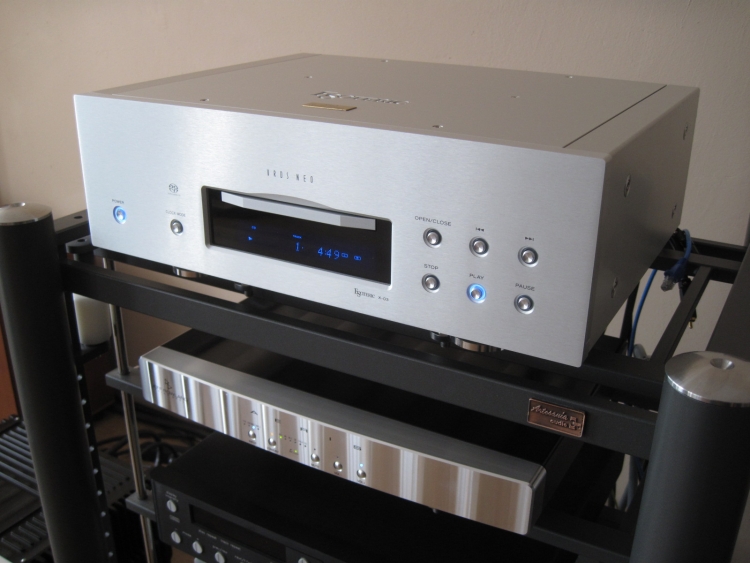
CD/SACD player with VRDS-NEO drive and tank-like build
The best optical drive that Teac have made thus far, a tank-like enclosure (30kgs) and SACD capability to boot. This was going to be the first true highend SACD player that I would hear in my own setup.
Retail price around 10.000 euro
Running in
Upon first connection (set up on the prime position of the Artesania rack, powered with a Harmonic Tech Pro ACII powercord, connected with Transparent Ultra XL XLR interlinks), cold from the box, I expected the X03 to sound cold too. You see, the owner had just bought it from the previous owner, who hadn’t used it in over a year. Knowing how cold Wadias can sound (like dead corpses, and yes, I must use a pleonasm here), I wasn’t expecting the X-03 to sound very engaging. Imagine my surprise when it played very lively and indeed very engaging rightaway!
The sound was a little cold and mid-forward but it wasn’t sterile or otherwise overly analytical.
What was also immediately evident, was the Wadia-typical bass: solid and deep yet tuneful. From memory, the X-03 has the type of bass more in line with the Wadia S7i (StreamUnlimited transport) than that of the 861 (Teac VRDS). This is not surprising given the fact that the X-03’s VRDS-NEO transport plays at double speed into a memory buffer, making it sound less like a classic VRDS transport, just like is the case with the S7i.
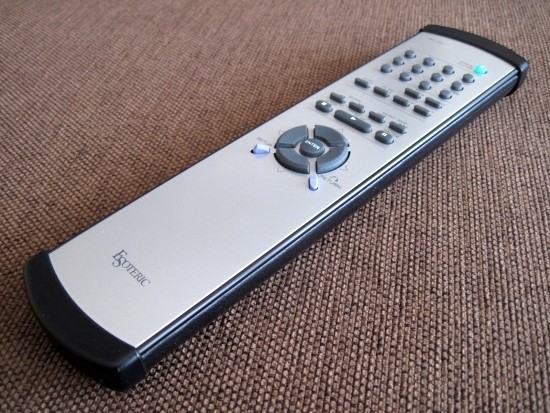
Above: the remote control is covered with leather on the underside.
Closer listening
After a few hours the sound was already warming up but I gave it a few more days before serious comparisons started. This is a second hand unit so I don’t expect it to still need copious amounts of running in. The X03 sounds upbeat and positive, fast but not overly tight and it has spot on neutral midrange. Not very warm but also not devoid of colour. Finally, treble is refined and airy, just the way I like it. There’s no Wadia-typical dryness or rolling off going on here.
Timbre seemed very good at first, but I discovered that the longer the X03 was used, the warmer it started to sound, and along with it, the less natural its timbre became, up to the point where I started to feel that it sounds a little synthetic.
Best way to describe this is that piano doesn’t sound like the real wood and string instrument, but more like a synthesizer.
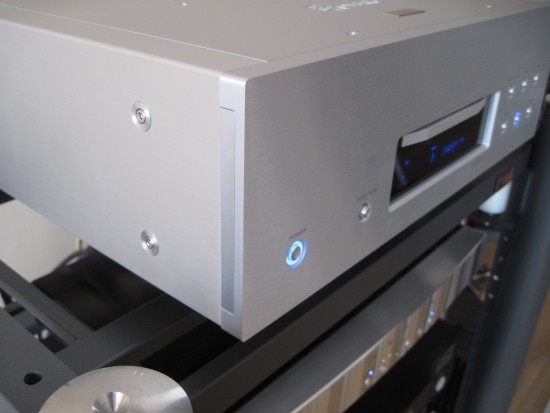
Compared to Wadia 581
The X03 and the Wadia 581 aren’t worlds apart, but there are obvious differences. For example, the X03 sounds quite shallow, sound not extending much outside the speakers. The Wadia paints a far wider and deeper soundstage, with much more air between the instruments and better layering back to front. This is something that Wadias are always good at. Further, the timbre of the Wadia is much more natural and life-like. I find it acoustically more convincing. But I can imagine that opinions may differ, and some people might prefer the warmer and more relaxed presentation of the X03. The timbre thing is also not something that all listeners are as sensitive to. The important thing to take away from this is that while some Esoteric players have been accused of sounding technical or overly clean or dry, the X03 absolutely does not comply to those descriptors. It is a very musical sounding machine.
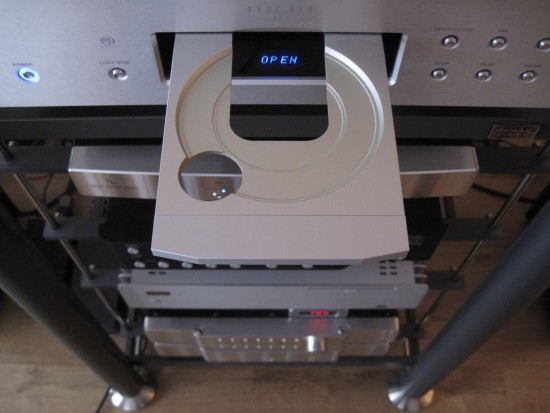
Compared to Mark Levinson 390S
The Levinson 390S has a different presentation mostly in the bass and midrange, which is warmer and more voluptuous. The X03 digs out just as much detail as the Levinson and has a more midrange-forward sound, but without sounding agressive. The X03 is just a bit more percussive. But like with the Wadia-X03 comparison, the Levinson also has a more natural timbre and is therefore more emotionally engaging.
SACD
I’ve never been very impressed with SACD. Sure, resolution and treble extension are better, but without exception, this comes at the cost of other aspects of the sound, mostly in the bass department. The X03 is no different: with SACD’s, bass is a lot thinner, almost sounding like there’s no VRDS-Neo transport in there. Also, the whole tonality becomes thinner, but it doesn’t tip over into an analytical sound. Interestingly, the soundstage becomes a lot wider and the whole sound image seems to grab you more, making the experience more emotionally involving. However, the X03 still has that unnatural timbre, even with SACDs. The proof of the pudding is that me and my listening buddy both felt that the Levinson 390S (without Aeris) already sounded emotionally more involving and acoustically more convincing. Adding the Aeris to the 390S really made for a winning team, as the detail retrieval started to approach the SACDs level. Moreover, even if playing SACD’s had improved the X03’s soundstaging, the Levinson still sounds wider and deeper, whether on its own or used with the Aeris.
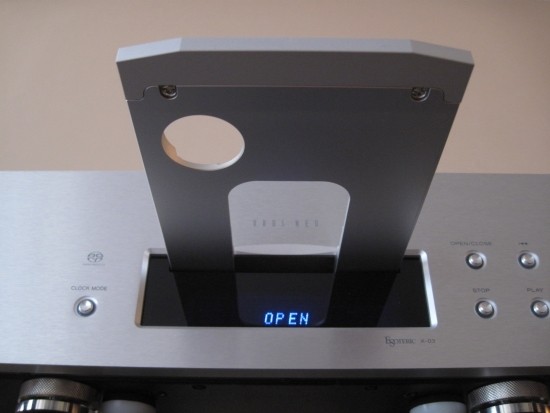
Used as a transport
Even if the Rowland Aeris DAC has thus far proved to be very accommodating, some CD players just work better as transports than others. The Meridian 506.24 for example sounds lacklustre when combined with the Aeris, but sounds just fine on its own. The Levinson 37 and 390S sound excellent combined with the Aeris, and they form my reference. The X03 sounds good with the Aeris, but not necessarily better than used on its own. I don’t mean that the Aeris doesn’t dig out more detail, because it does. The Aeris also paints a wider soundstage and improves dynamics. But somehow the two don’t really gel. In spite of truely excellent bass, I think the best way to describe it is that the end result sounds just a little too technical. Used on its own, the X03 sounds more fluid and relaxed, and for me that’s the more balanced presentation.
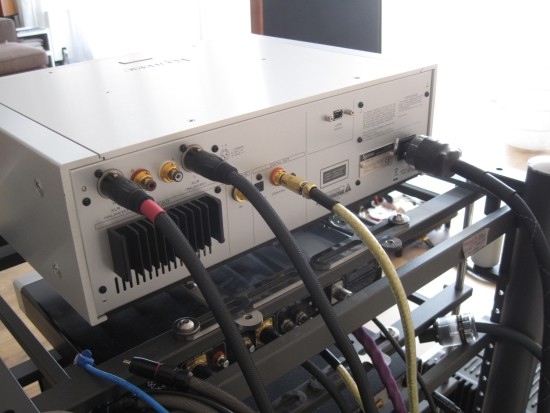
The transport inside the X03 is the gobsmackingly well-engineered VRDS-Neo.
It’s so inspiring that I’d contemplate using a transparent cover. But I found that it produces a high-pitched whine that can be heard across the room between the tracks. When music is playing, the whine is drowned out easily, even when playing quietly. I removed the lid and was surprised to find that the whine increased volume to a level where it could be hear in the other room all the way at the other side of the house. That’s one sound-proofing case! The thick aluminium panels not only looking pretty but serving a very just cause here. Googling around I found that more Esoteric owners experienced this and in conclusion it seems that this is no defect but by design.
Other that this high pitched tone, the transport performs flawlessly. What’s more: the drawer is a work of art, and slides in and out super-smoothly and silently. In this aspect it rates among the best disc loading systems that I know of: Linn CD12, Levinson 37/390S and Accuphase DP410.
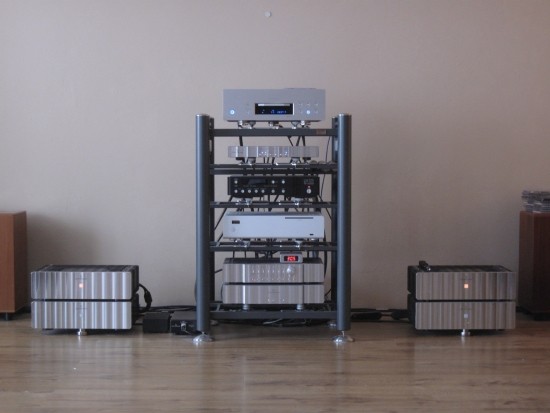
Conclusion
Forget my comments about the Rowland Aeris. At 11.500 euro, it’s just not a fair comparison. Also don’t worry too much about my SACD comments, as the X03 does indeed sound a lot better when playing SACD’s than it does playing CD’s. Judged on its own merits, the X03 is a mighty fine sounding player that scores heavily in the bass, PRAT and dynamics departments. If it weren’t for its less natural timbre, I would probably have wanted one for myself. But I know that not all people are as sensitive to this as I am. Also, I’m using Apogee Divas which are incredibly revealing, so, as always, your mileage may vary.

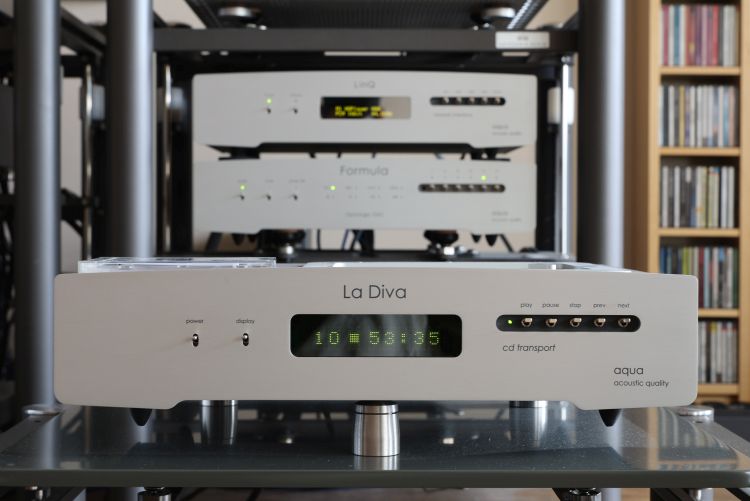
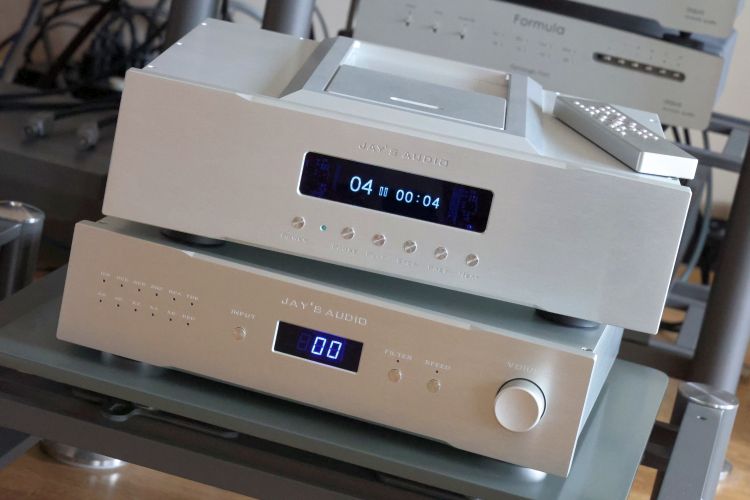
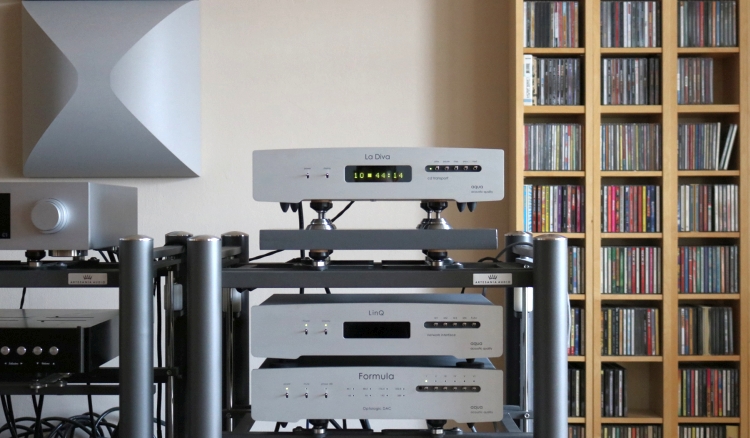
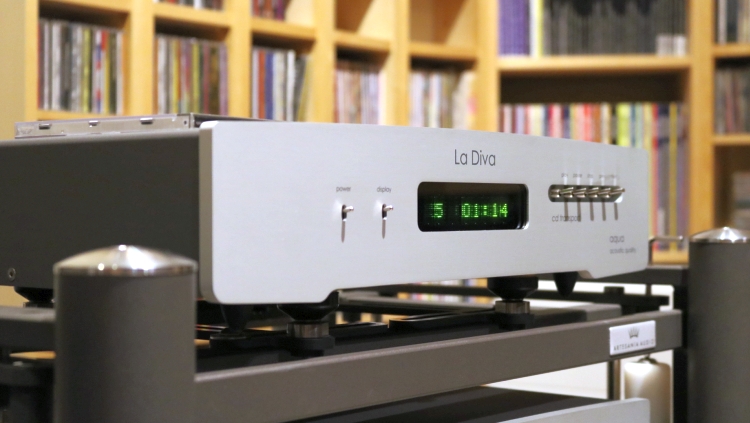
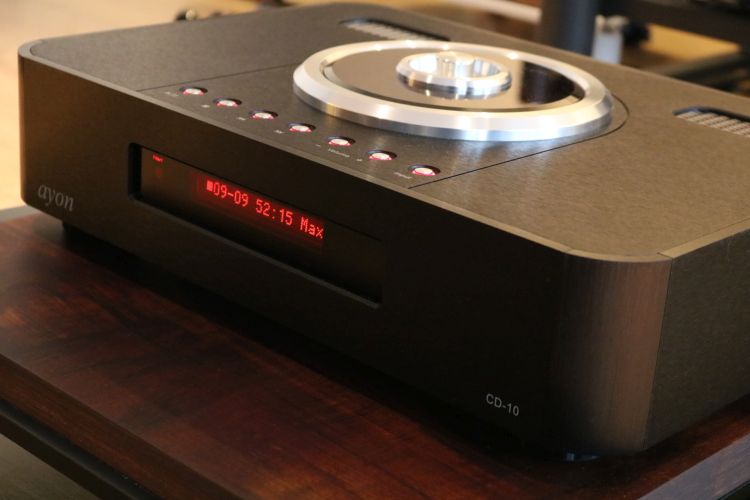
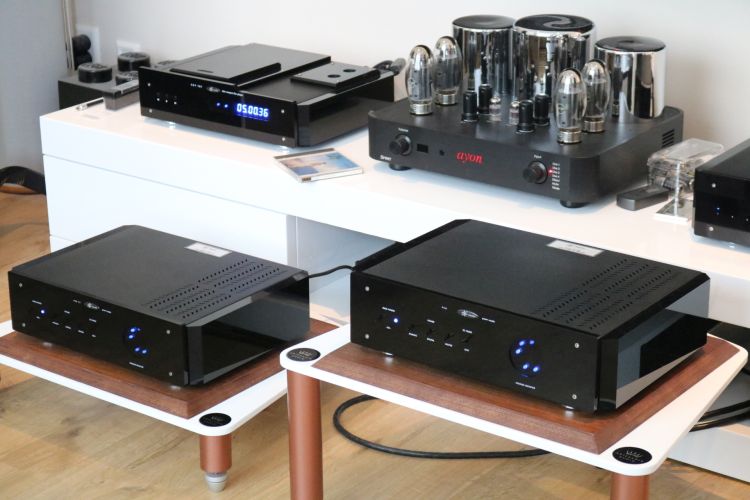
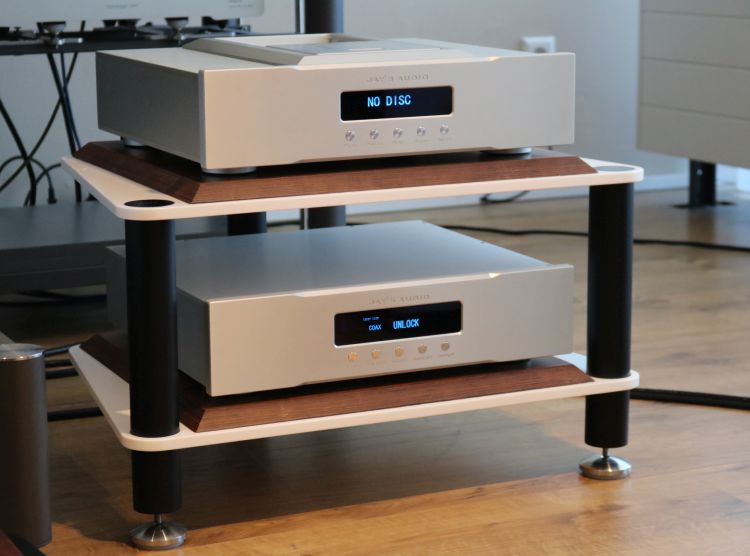
as a owner of XO1 Esoteric the whirring disappear if you check the perfect level of the player(feet) and clean the lens